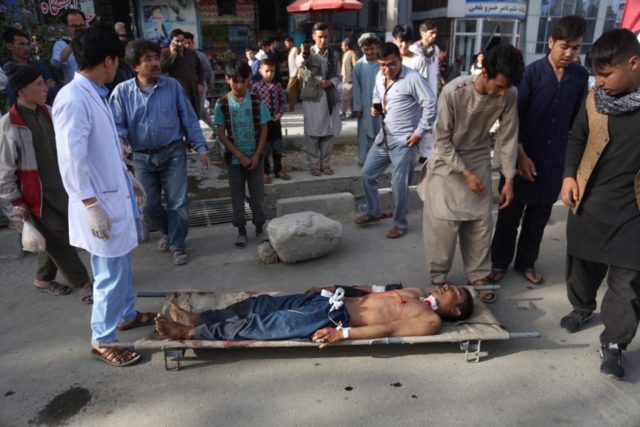The killing and maiming of civilians, mostly at the hands of the Taliban and to a lesser extent the Islamic State (ISIS/ISIL), has reached “extreme levels” in Afghanistan, the United Nations reported this week.
According a report issued Wednesday by the United Nations Assistance Mission in Afghanistan (UNAMA), there were 8,050 civilians killed (2,798) and wounded (5,252) between January and September. The use of suicide bombings and other improvised explosive devices (IEDs) by anti-government elements accounted for almost half (3,634) the casualties.
“In the first nine months of 2018, the UN Assistance Mission in Afghanistan (UNAMA) continued to document extreme levels of harm to civilians from the armed conflict, including recording the most civilian deaths during the same nine-month period since 2014,” UNAMA reported.
“The killing and maiming of Afghan civilians by improvised explosive devices (IEDs), particularly suicide devices, has reached extreme levels in Afghanistan. IEDs cause almost half of the civilian casualties from conflict-related violence and are being increasingly used in attacks targeting civilians,” UNAMA added in an October 7 report.
The 3,634 casualties caused by suicide attacks and jihadi IEDs, also known as homemade bombs, during the first nine months of this year include 1,065 deaths and 2,569 injuries, marking a 21 percent increase from the same period in 2017.
UNAMA pointed in its October 7 assessment:
The leading cause of civilian deaths and injuries from the armed conflict remained the combined use of suicide and non-suicide IEDs by Anti-Government Elements, reaching record high levels in the first three quarters of 2018, with Anti-Government Elements increasingly directing such attacks against the civilian population, including minority Shi’a Muslims, the majority of whom are ethnic Hazara.
The United Nations determined that the Taliban remains the deadliest group, trailed closely by the ISIS branch in Afghanistan known as Khorasan Province (ISKP).
“Of the 65 percent [5,243] of civilian casualties attributed to Anti-Government Elements, 35 percent were attributed to Taliban, 25 percent to Daesh/ISKP, and five percent to unidentified Anti- Government Elements (including less than one percent to self-proclaimed Daesh/ISKP),” UNAMA noted.
For the first time, Nangarhar, ISIS’ primary stronghold located along the border with Pakistan, surpassed the Afghan capital of Kabul regarding the highest number fatalities.
“UNAMA notes with extreme concern that Nangarhar became the province that recorded the most civilian casualties in the first nine months of 2018 with 1,494 civilian casualties (554 deaths and 940 injured), more than double the number of civilian casualties recorded in that province during the same period in 2017,” the U.N. reported.
Despite the fall of the group’s so-called caliphate in Iraq and Syria, ISIS remains a significant threat in Afghanistan where it has repeatedly attempted to resurrect its Islamic State.
U.N. officials determined that ISIS was behind more than half of the IED deaths.
“UNAMA attributed all civilian casualties from suicide and non-suicide IEDs during this period to Anti- Government Elements, with 52 percent of civilian casualties attributed to Daesh/Islamic State Khorasan Province (ISKP), 40 percent to Taliban, and the remainder to undetermined Anti-Government Elements,” the international body revealed.
Suicide attacks and IEDs are the number one cause of civilian casualties followed by the fighting between insurgents and U.S. -backed Afghan security forces that resulted in 605 fatalities and 1,706 injuries between the beginning of January and end of September.
U.S. and Afghan military airstrikes killed 313 and wounded 336 civilians during the first nine months of this year.
“Women and children continued to comprise more than 60 percent of all aerial attack civilian casualties and the number of child casualties from these attacks increased by 53 percent compared to the first nine months of 2017,” UNAMA reported.
The U.N. reports come amid intensified efforts by U.S. President Donald Trump’s administration to bring the Taliban to the peace negotiation table.
So far, the Taliban has rejected a U.S.-backed offer by Kabul of a ceasefire and recognition as a legitimate political group.
“As there can be no military solution to the fighting in Afghanistan, the United Nations renews its call for an immediate and peaceful settlement to the conflict,” Tadamichi Yamamoto, the UNAMA chief in Kabul,” declared in a statement.

COMMENTS
Please let us know if you're having issues with commenting.